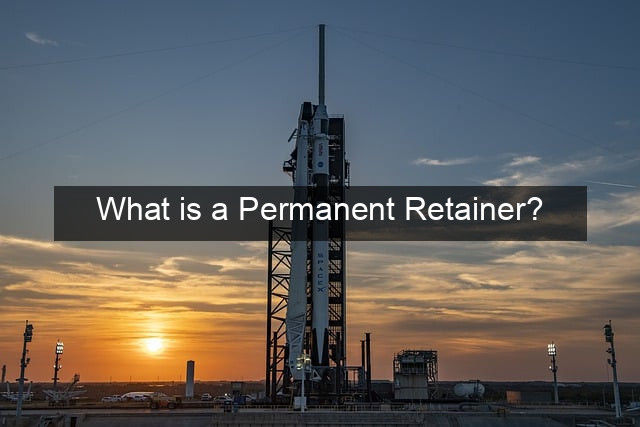What is a Permanent Retainer?
- What is a Permanent Retainer?
- What is a Permanent Retainer? Your Guide to a Straighter Smile
- Understanding Permanent Retainers
- What Exactly Are They?
- Why Choose a Permanent Retainer?
- The Procedure: What to Expect
- Living with a Permanent Retainer
- Oral Hygiene and Maintenance
- Potential Challenges and Solutions
- Alternatives to Permanent Retainers
- Removable Retainers: Options and Considerations
- Conclusion: Making the Right Choice for Your Smile
- Frequently Asked Questions about Permanent Retainers
- Common Queries and Concerns

What is a Permanent Retainer? Your Guide to a Straighter Smile
A picture-perfect smile is often the result of dedicated orthodontic treatment. But what happens after the braces come off? Maintaining that hard-earned alignment is crucial, and that’s where permanent retainers come into play. These small, discreet devices are bonded behind your teeth, working tirelessly to prevent them from shifting back to their original positions. This comprehensive guide will delve into the world of permanent retainers, covering everything from their purpose and procedure to their pros and cons, helping you make an informed decision about your long-term orthodontic care.
Understanding Permanent Retainers
What Exactly Are They?
Permanent retainers, also known as fixed retainers, are custom-made wires bonded to the back of your teeth, typically the lower six front teeth. They are designed to be, as their name suggests, permanent, providing continuous support to maintain proper tooth alignment after braces or Invisalign treatment. These thin wires are virtually invisible and don’t interfere with your speech or daily life.
The material used is typically stainless steel, a durable and biocompatible option that can withstand the forces of your bite. The retainer is carefully shaped to perfectly match the curvature of your teeth, ensuring a snug and comfortable fit. This custom-fit is essential for its effectiveness in preventing relapse and maintaining the results of your orthodontic treatment.
Unlike removable retainers, which you take out for eating and cleaning, permanent retainers remain in place 24/7. This consistent pressure helps to solidify the new tooth positions and prevent gradual shifting, ensuring your smile remains straight for years to come.
Why Choose a Permanent Retainer?
Permanent retainers offer several advantages, particularly for individuals prone to relapse or those who struggle with the responsibility of wearing removable retainers. They eliminate the risk of forgetting to wear the retainer, ensuring consistent and uninterrupted tooth stabilization.
They are incredibly discreet, hidden behind the teeth where they are virtually invisible. This is a significant benefit for those self-conscious about wearing visible retainers. Furthermore, they require minimal maintenance, unlike removable retainers which need regular cleaning and occasional replacement.
For patients who have undergone significant orthodontic correction or have a history of relapse, permanent retainers provide an added layer of security, ensuring the long-term stability of their new smile. This makes them a valuable investment in maintaining the results of orthodontic treatment.
The Procedure: What to Expect
The process of getting a permanent retainer is relatively simple and painless. After your braces are removed, your orthodontist will thoroughly clean and dry the teeth where the retainer will be placed. A special dental adhesive is then used to bond the custom-fitted wire to the back of your teeth.
A curing light is used to harden the adhesive, securing the retainer in place. The entire process typically takes less than an hour. You may experience some minor discomfort or a feeling of pressure immediately after the procedure, but this usually subsides quickly. Your orthodontist will provide you with specific instructions on how to care for your new retainer.
While permanent retainers are designed to be long-lasting, regular check-ups with your orthodontist are essential to ensure the retainer remains intact and functioning correctly. These appointments also allow your orthodontist to monitor your teeth and address any potential issues promptly.
Living with a Permanent Retainer
Oral Hygiene and Maintenance
Maintaining good oral hygiene with a permanent retainer requires a slightly different approach. While brushing and flossing become slightly more challenging, it’s crucial to adapt your routine to ensure optimal oral health. Using a floss threader can help you effectively clean underneath the wire.
Interdental brushes are also helpful tools for cleaning around the retainer and between your teeth. Regular rinsing with an antibacterial mouthwash can further help to prevent plaque buildup and maintain gum health. Your orthodontist will demonstrate the proper cleaning techniques and recommend suitable oral hygiene products.
Regular dental check-ups are even more vital with a permanent retainer. These appointments allow your dentist and orthodontist to monitor the retainer’s integrity and address any potential issues early on, preventing complications and ensuring long-term oral health.
Potential Challenges and Solutions
While permanent retainers are generally well-tolerated, some individuals may experience minor challenges. One common issue is difficulty flossing. However, with practice and the use of floss threaders, this becomes easier over time. Occasionally, the retainer wire can come loose or break, requiring a visit to the orthodontist for repair or replacement.
Another potential challenge is plaque buildup around the retainer, which can lead to gum inflammation or tooth decay. Diligent oral hygiene practices, including regular brushing, flossing, and rinsing with antibacterial mouthwash, can minimize this risk. Regular dental check-ups are crucial for early detection and prompt treatment of any potential issues.
Speech impediments are rare but can occur initially. However, most individuals adapt quickly and their speech returns to normal within a few days. If you experience any persistent discomfort or issues with your permanent retainer, it’s essential to consult your orthodontist.
Alternatives to Permanent Retainers
Removable Retainers: Options and Considerations
Removable retainers are a common alternative to permanent retainers. They offer the flexibility of being removed for eating, brushing, and flossing, simplifying oral hygiene routines. There are two main types: Hawley retainers and clear plastic retainers (Essix retainers).
Hawley retainers are made of acrylic and wire, while Essix retainers are made of clear plastic, making them more aesthetically pleasing. However, removable retainers rely on patient compliance, and forgetting to wear them can lead to relapse. They also require regular cleaning and may need replacement over time.
The choice between removable and permanent retainers depends on individual needs and preferences. Your orthodontist can help you determine the best option based on your specific case, considering factors like your treatment history, risk of relapse, and lifestyle.
| Retainer Type | Pros | Cons |
|---|---|---|
| Permanent Retainer | Discreet, No Compliance Issues, Continuous Retention | Can make flossing challenging, Requires specialized cleaning |
| Removable Retainer (Hawley) | Easy to clean, Removable for eating | Visible, Requires compliance, Can be lost or broken |
| Removable Retainer (Essix) | More discreet than Hawley, Removable for eating | Requires compliance, Can be lost or broken, Prone to staining |
Conclusion: Making the Right Choice for Your Smile
Permanent retainers play a crucial role in maintaining the results of orthodontic treatment. They offer a discreet and effective way to prevent relapse and ensure a long-lasting, straight smile. While they present some challenges, such as adapting to oral hygiene routines, the benefits of continuous retention often outweigh these minor inconveniences.
Ultimately, the decision of whether or not to get a permanent retainer is a personal one, best made in consultation with your orthodontist. By understanding the advantages, disadvantages, and alternatives, you can make an informed choice that aligns with your individual needs and preferences, securing a lifetime of confident smiles.
This guide has provided a comprehensive overview of permanent retainers. However, it’s essential to remember that every individual’s orthodontic journey is unique. Consulting with a qualified orthodontist is the best way to determine the most appropriate treatment plan for your specific needs and achieve the long-lasting, beautiful smile you deserve.
Frequently Asked Questions about Permanent Retainers
Common Queries and Concerns
- How long do permanent retainers last? With proper care, they can last for many years, even decades. However, regular check-ups are essential to ensure their integrity.
- Do they hurt? The procedure itself is generally painless. You might experience some minor discomfort immediately after, but this usually subsides quickly.
- Can I get a permanent retainer on my top teeth? Yes, although they are more commonly placed on the lower front teeth.
- Can I eat normally with a permanent retainer? Yes, you can eat normally. However, it’s important to avoid sticky or hard foods that could damage the retainer.
- Can they be removed? Yes, they can be removed by an orthodontist if necessary.
- How much do they cost?

